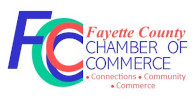The Growth Clock: Timed Strategies for Every Business Chapter
Building a business is never just about getting bigger. It’s about growing smarter, adapting with intention, and knowing when to change lanes. The path to expansion isn’t linear; it bends, stalls, and loops, demanding that decision-makers stay nimble with their choices. From seedling startups to mature enterprises, each phase of business growth calls for a different mindset—and a different kind of playbook.
Laying Foundations in the Beginning
In the earliest days, before logos are finalized and websites go live, the emphasis has to be clarity. Not in the product, necessarily—that can still shift—but in the problem being solved. Companies that scale well later tend to know who they serve and why from day one. Early-stage growth isn’t about chasing every opportunity; it’s about protecting focus and building systems, however lean, that don’t collapse under pressure later.
The Power of Limited Offerings
There’s a temptation to do everything, especially once the first sales roll in. But businesses that narrow their offerings early often scale more sustainably than those that spread too wide, too fast. Offering fewer services or products allows teams to refine delivery, deepen customer trust, and create playbooks for excellence. Mastery becomes a form of marketing, and over time, a reputation built on doing one thing well turns into a platform for broader influence.
Operational Cleanliness Is Growth Fuel
Keeping business and financial records up-to-date, well-organized, and easy to access isn’t just administrative hygiene—it’s a growth-enabler. Decisions become faster, tax season less chaotic, and investor conversations more credible when documents are in order. Saving key records as PDFs helps ensure consistency across platforms and easier sharing across teams. If you need to revise any of those records, a PDF editor makes it simple to update without the need to convert the file to another format. For any physical documents or image-based records, tools that let you convert image to PDF bring everything into a tidy, searchable system.
Hiring as a Strategic Lever
Growth in the middle stages—the awkward teenage years of a business—isn’t just about bringing in more clients. It’s about building a team that doesn’t just work in the business, but helps to work on it. Hiring at this point becomes less about filling seats and more about shaping culture, capabilities, and eventually, leadership succession. The businesses that endure aren’t just those with great ideas—they’re the ones that evolve into institutions, person by person.
When to Turn to Outside Capital
Contrary to common lore, not every growing business needs an injection of outside money. But for those that do, timing is everything. Taking funding too early can warp a company’s natural development, while waiting too long might mean missing a strategic inflection point. The best moment to raise capital tends to be when there’s a clear understanding of how that capital will convert into velocity—not just noise or visibility, but real, measurable momentum.
Diversification Without Distraction
Established businesses often reach a point where they wonder what else they can sell—or who else they can serve. Diversification can be a powerful move, but only when it complements the core business instead of clouding it. The art is in finding adjacent opportunities that stretch the brand without snapping its integrity. When done well, it brings fresh revenue streams and audience segments without sacrificing what made the company relevant in the first place.
Data as a Dialogue, Not a Dictator
As businesses mature, they tend to accumulate data—on customers, markets, operations—but not all use it wisely. Growth in these later phases comes from understanding which data points matter, and which ones are distractions dressed up in dashboards. The smartest companies treat data less like a dictator and more like a conversation partner: helpful, but not infallible. Listening to numbers, while still staying in touch with instinct, allows for better long-term decisions that aren’t driven purely by charts.
Stability as a Growth Strategy
Eventually, some businesses hit a plateau—not because they’ve failed, but because they’ve reached a kind of stability that others might envy. At this stage, growth may mean deepening impact rather than expanding outward. Refining the customer experience, improving internal processes, or becoming a thought leader in the space can be forms of growth too. Not everything has to scale up; sometimes the smartest play is to scale better.
Growth doesn’t happen by accident. It’s an evolving practice that requires attention, humility, and a willingness to rewrite the rules depending on the chapter. Each phase comes with its own traps and tailwinds, but businesses that learn to time their moves tend to build the kind of resilience that outlasts hype cycles and economic trends. Because in the end, sustainable growth isn’t just about expansion—it’s about alignment, precision, and knowing what kind of future the business is really chasing.
Join the Fayette County Chamber to unlock a wealth of resources and connections that will help your business flourish in our vibrant community!



